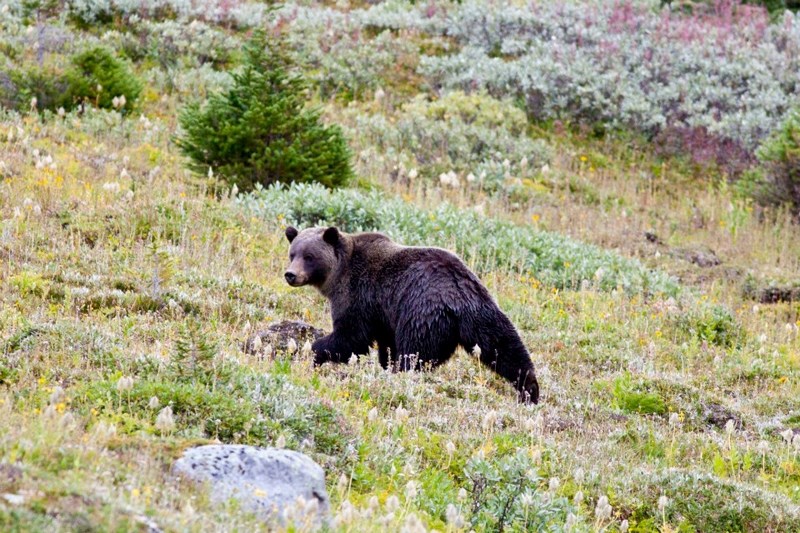An extensive study of grizzly bears, including bruins living in the foothills of West Central Alberta, has uncovered a number of important findings about the animals' behaviours, particularly as it relates to the raising of offspring and habitat selection.
The findings, in turn, could help wildlife officers when it comes to deciding where to relocate animals from one area of the province to another, the study's lead author told the Gazette.
The four-year University of Alberta research project was conducted in the foothills of west-central Alberta. Researchers tracked 32 adult and young grizzly bears that had been fitted with GPS radio collars, monitoring animals' movements at 31,849 individual locations.
"We investigated whether patterns in habitat selection result from instinct or learning for a population of grizzly bears in Alberta,î said lead author Scott Nielsen, an assistant professor in the U of A department of renewable resources.
"We found that habitat selection and relatedness were positively correlated in female bears during the fall season, with a trend in the spring, but not during any season for males.
"This suggests that habitat selection is a learned behaviour because males do not participate in parental care: a genetically predetermined behaviour (instinct) would have resulted in habitat selection and relatedness correlations for both sexes.î
The results suggest that habitat selection could have implications for the translocation of bears to new environments elsewhere in the province, he said.
"Translocating animals that were trained or learned on one landscape and placing them in a new environment is probably going to present that much more of a challenge for the bear,î he said.
"For people translocating these animals, it is another thing they should be taking in consideration. It raises additional questions about how successful will the translocation be. Will those animals be able to survive? Is it really a solution or not?
"You shouldn't be dumping them in any old habitat. Matching them (with original habitat to new habitat) is probably going to be pretty important. It is important to consider those types of things.î
The Natural Sciences and Engineering Research Council of Canada, the Alberta Conservation Association and partners from the Foothills Research Institute Grizzly Bear Program funded the research project.
The grizzly is considered a threatened species in Alberta, with fewer than 700 animals in the wild in the province, he said.



